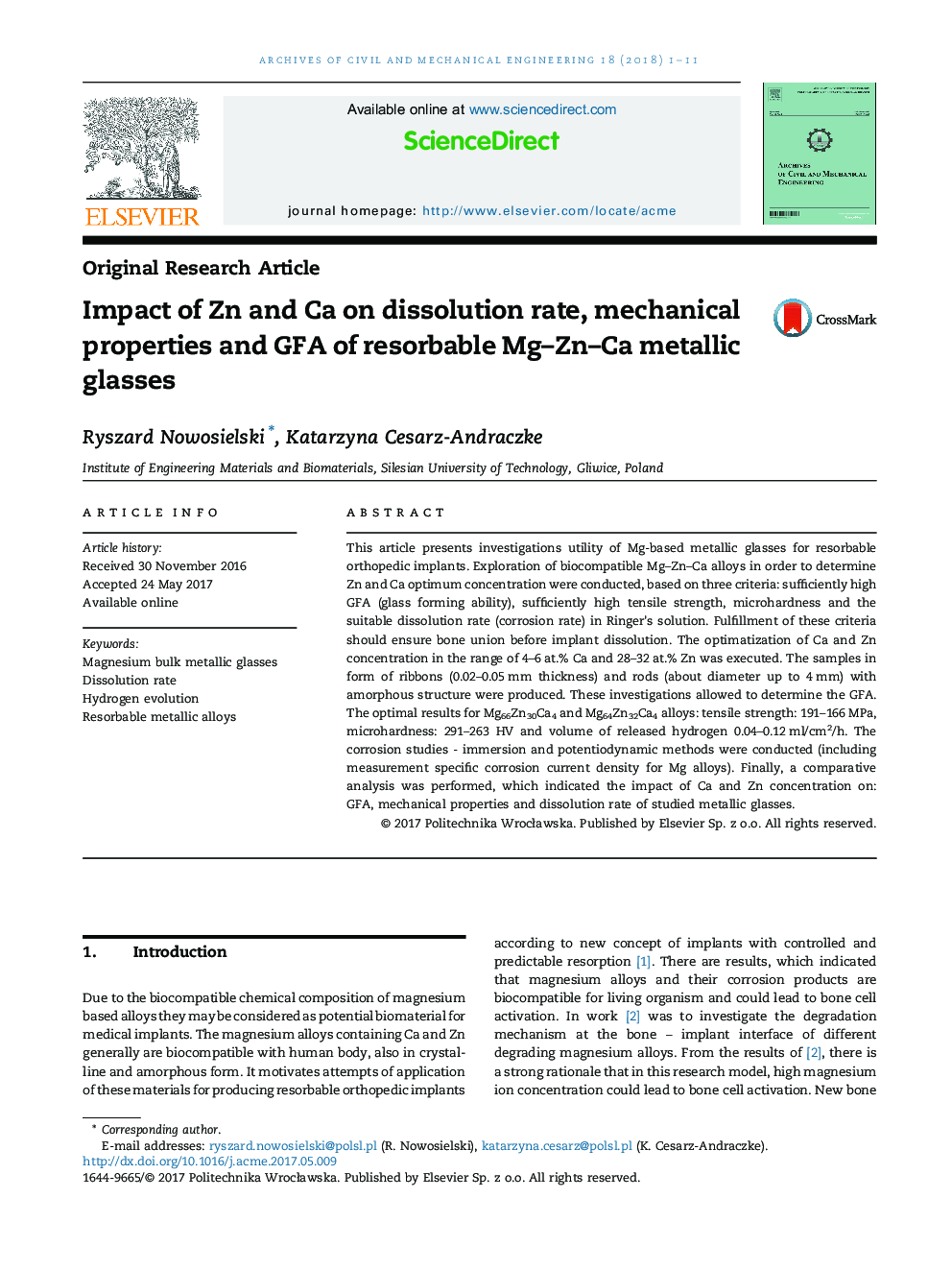| Article ID | Journal | Published Year | Pages | File Type |
|---|---|---|---|---|
| 6694618 | Archives of Civil and Mechanical Engineering | 2018 | 11 Pages |
Abstract
This article presents investigations utility of Mg-based metallic glasses for resorbable orthopedic implants. Exploration of biocompatible Mg-Zn-Ca alloys in order to determine Zn and Ca optimum concentration were conducted, based on three criteria: sufficiently high GFA (glass forming ability), sufficiently high tensile strength, microhardness and the suitable dissolution rate (corrosion rate) in Ringer's solution. Fulfillment of these criteria should ensure bone union before implant dissolution. The optimatization of Ca and Zn concentration in the range of 4-6Â at.% Ca and 28-32Â at.% Zn was executed. The samples in form of ribbons (0.02-0.05Â mm thickness) and rods (about diameter up to 4Â mm) with amorphous structure were produced. These investigations allowed to determine the GFA. The optimal results for Mg66Zn30Ca4 and Mg64Zn32Ca4 alloys: tensile strength: 191-166Â MPa, microhardness: 291-263 HV and volume of released hydrogen 0.04-0.12Â ml/cm2/h. The corrosion studies - immersion and potentiodynamic methods were conducted (including measurement specific corrosion current density for Mg alloys). Finally, a comparative analysis was performed, which indicated the impact of Ca and Zn concentration on: GFA, mechanical properties and dissolution rate of studied metallic glasses.
Keywords
Related Topics
Physical Sciences and Engineering
Engineering
Civil and Structural Engineering
Authors
Ryszard Nowosielski, Katarzyna Cesarz-Andraczke,
